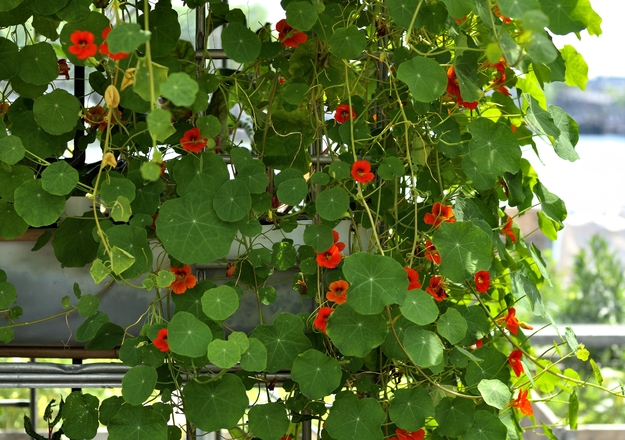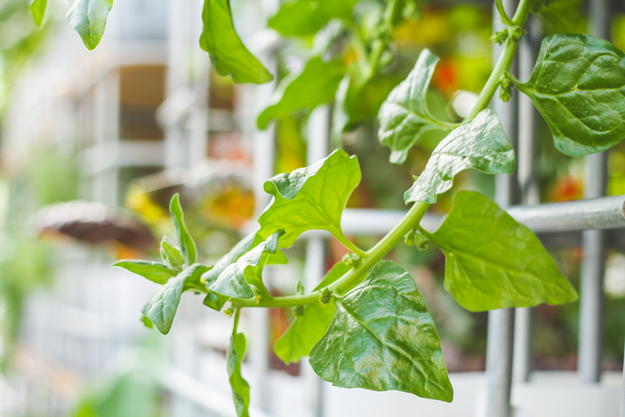
Nasturtium
Nasturtium has been planted in 3 top growbeds, and it started growing relatively early. The growth is very vigorously and the plant scrambles over and through other plants, and falling from the top growbeds, down to the floor. The growth is so vigorously that it creates a very dense cover over the growbed, and it is important to make sure to cut the plant sometimes, before it starts taking over the space of other plants. Both the flowers and the leafs of nasturtium have a special spicy taste to them. The plant creates relatively more flowers in poor soils, and more leafs in rich soils. Nevertheless, many flowers have been blooming in the greenhouse. Especially the flowers are loved by many people, and they are prepared to pay a lot for them, on places like the Noordermarkt.
Chard
One of the easiest, most nutritious and undervalued crops we have been growing in the aquaponics system. Chard was one of the few plants that survived the move from inside the old office, to our new system in an unheated greenhouse. We are growing different types of chard in our system, including Swiss chard. Chard always seem to do well, but the more sunlight it gets, the faster it grows.

Basil
This time a year basil is a very nice plant to have in your growbeds, as it has a great scent. Our basil has been growing very rapidly over the last 2 months. During the last couple of weeks, the growth has been so rapidly that basil can be harvested every other day, which should be done if you want encourage more growth. Also, it is wise to cut of the centre shoot to prevent it from flowering. If you would like to add some colour to your system, you might want to consider to sow the purple-coloured Dark opal basil. This species also grows very well in our aquaponics system.
New Zealand spinach
New Zealand spinach, also known as kōkihi in Māori or as everlasting spinach, is another plant that seems to do great in the environment in our greenhouse, and it is now covering big parts of our growbeds. Although it is not really a spinach, it tastes very similar and can also be used in cooking and salads. Kōkihi is supposed to be productive throughout the whole summer.
